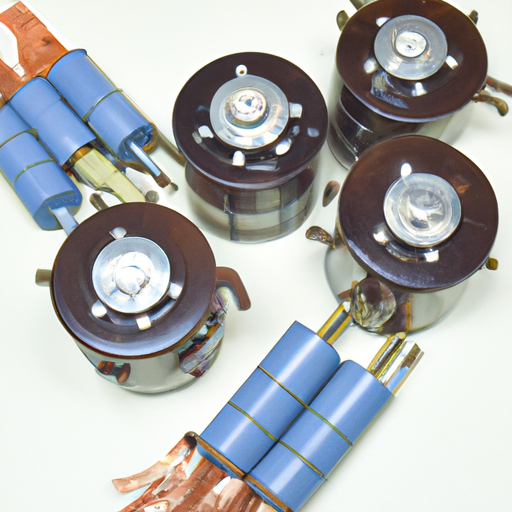Isolation transformers are essential components in various electrical systems, providing safety and protection against electrical hazards. These transformers are widely used in both residential and industrial applications to isolate sensitive equipment from power line disturbances and to reduce the risk of electric shock. In this article, we will explore the popular isolation transformer product types, their features, and their applications.

2. Three-phase isolation transformers: Three-phase isolation transformers are used in industrial and commercial applications where three-phase power is required. They are designed to provide electrical isolation and voltage regulation for three-phase equipment such as motors, pumps, and industrial machinery. These transformers have three primary windings and three secondary windings, providing a one-to-one ratio between input and output voltage for each phase.
3. Auto-transformers: Auto-transformers are a type of isolation transformer that has a single winding with multiple taps. Unlike traditional isolation transformers, auto-transformers do not provide complete electrical isolation between the primary and secondary windings. Instead, they use a common winding for both input and output voltage, resulting in a smaller and more cost-effective design. Auto-transformers are commonly used in applications where voltage conversion is required, such as in voltage regulators and motor starters.
4. Medical-grade isolation transformers: Medical-grade isolation transformers are specifically designed to meet the stringent safety requirements of medical facilities. These transformers provide electrical isolation and noise reduction for medical equipment, ensuring patient safety and preventing interference with sensitive medical devices. Medical-grade isolation transformers are often equipped with additional features such as low leakage current, high insulation resistance, and built-in surge protection.
5. Step-up and step-down isolation transformers: Step-up and step-down isolation transformers are used to convert the voltage level between the input and output sides. Step-up transformers increase the voltage level, while step-down transformers decrease it. These transformers are commonly used in applications where voltage conversion is required, such as in power distribution systems, industrial machinery, and renewable energy systems.
6. Toroidal isolation transformers: Toroidal isolation transformers are a type of transformer that features a toroidal (doughnut-shaped) core. This design offers several advantages over traditional laminated core transformers, including reduced size, weight, and electromagnetic interference. Toroidal transformers are commonly used in audio equipment, medical devices, and other applications where low noise and compact size are critical.
7. High-frequency isolation transformers: High-frequency isolation transformers are designed to operate at higher frequencies than standard transformers. These transformers are commonly used in applications such as telecommunications, data centers, and renewable energy systems. High-frequency transformers offer improved efficiency, reduced size, and better performance at high frequencies.
In conclusion, isolation transformers are available in various types and configurations to meet the specific requirements of different applications. Whether it is for residential, commercial, or industrial use, selecting the right isolation transformer is crucial to ensure electrical safety, protect sensitive equipment, and maintain reliable power supply. By understanding the popular isolation transformer product types mentioned above, users can make informed decisions when choosing the appropriate transformer for their specific needs.
Isolation transformers are essential components in various electrical systems, providing safety and protection against electrical hazards. These transformers are widely used in both residential and industrial applications to isolate sensitive equipment from power line disturbances and to reduce the risk of electric shock. In this article, we will explore the popular isolation transformer product types, their features, and their applications.

2. Three-phase isolation transformers: Three-phase isolation transformers are used in industrial and commercial applications where three-phase power is required. They are designed to provide electrical isolation and voltage regulation for three-phase equipment such as motors, pumps, and industrial machinery. These transformers have three primary windings and three secondary windings, providing a one-to-one ratio between input and output voltage for each phase.
3. Auto-transformers: Auto-transformers are a type of isolation transformer that has a single winding with multiple taps. Unlike traditional isolation transformers, auto-transformers do not provide complete electrical isolation between the primary and secondary windings. Instead, they use a common winding for both input and output voltage, resulting in a smaller and more cost-effective design. Auto-transformers are commonly used in applications where voltage conversion is required, such as in voltage regulators and motor starters.
4. Medical-grade isolation transformers: Medical-grade isolation transformers are specifically designed to meet the stringent safety requirements of medical facilities. These transformers provide electrical isolation and noise reduction for medical equipment, ensuring patient safety and preventing interference with sensitive medical devices. Medical-grade isolation transformers are often equipped with additional features such as low leakage current, high insulation resistance, and built-in surge protection.
5. Step-up and step-down isolation transformers: Step-up and step-down isolation transformers are used to convert the voltage level between the input and output sides. Step-up transformers increase the voltage level, while step-down transformers decrease it. These transformers are commonly used in applications where voltage conversion is required, such as in power distribution systems, industrial machinery, and renewable energy systems.
6. Toroidal isolation transformers: Toroidal isolation transformers are a type of transformer that features a toroidal (doughnut-shaped) core. This design offers several advantages over traditional laminated core transformers, including reduced size, weight, and electromagnetic interference. Toroidal transformers are commonly used in audio equipment, medical devices, and other applications where low noise and compact size are critical.
7. High-frequency isolation transformers: High-frequency isolation transformers are designed to operate at higher frequencies than standard transformers. These transformers are commonly used in applications such as telecommunications, data centers, and renewable energy systems. High-frequency transformers offer improved efficiency, reduced size, and better performance at high frequencies.
In conclusion, isolation transformers are available in various types and configurations to meet the specific requirements of different applications. Whether it is for residential, commercial, or industrial use, selecting the right isolation transformer is crucial to ensure electrical safety, protect sensitive equipment, and maintain reliable power supply. By understanding the popular isolation transformer product types mentioned above, users can make informed decisions when choosing the appropriate transformer for their specific needs.